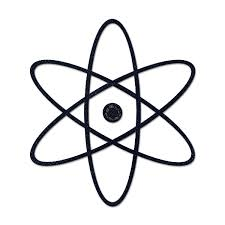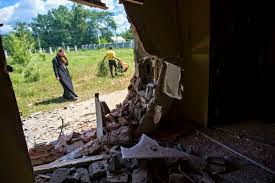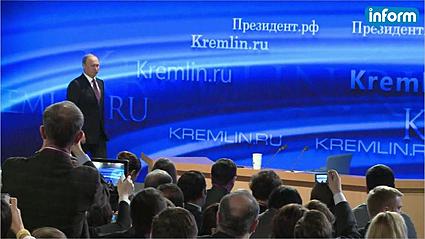The current crisis unfolding in Ukraine has brought the issue of nuclear weapons back into sharp focus. In recent years, nuclear disarmament has proved unexciting. The unilateral reduction of the US nuclear weapons stockpile under George W. Bush failed to draw serious attention. The impact of Barack Obama’s speech in Prague, which promised greater efforts to eliminate nuclear weapons was short-lived (and included the telling caveat that the goal was ‘not in [his] lifetime’). Unfortunately, we have learned, yet again, that it takes a crisis to get public and politicians to pay attention to nuclear weapons. Sadly, these sorts of crises tend to make nuclear weapons look more attractive and useful instead of increasing calls for their elimination.
Nuclear weapons feature in the Ukraine crisis in three ways.
Within Ukraine
The first dimension is increased attention within Ukraine on the voluntary giving up of nuclear weapons in the 1990s, and today’s calls for nuclear rearmament. While these issues have been present in Ukrainian political discourse for years, such calls had previously been rare and limited to marginal groups. Now, they originate from more centrist parties. Nationalists, who had been the main source of this sentiment, have become more influential in Ukrainian political life. Spikes in proposals for nuclear rearmament can be clearly linked to the more acute periods of the crisis – the referendum in Crimea in the spring; and to the intensified fighting in the East, between late summer and early autumn. A new stage of escalation could conceivably produce more such calls and the tabling of nuclear rearmament bills in Ukraine’s parliament.
Calls for the re-acquisition of nuclear weapons, and claims that a nuclear Ukraine would have been more secure against Russia never fail to draw attention both inside and outside the country, but the Ukrainian public has been largely indifferent to it. Before the recent events, only parties with low approval ratings (5% or less) pushed the issue, perhaps to gain publicity and increase their popularity, although this never worked. The perception of an acute external threat and a growth of nationalism helped increase the appeal of rearmament, but apparently only marginally. Politicians may use it to enhance their visibility, but the actual process of reacquiring nuclear weapons is not realistic – the public will hardly support a major commitment of resources for that purpose. Attention is concentrated instead on the military campaign in the eastern part of the country and on tangible economic, social, and political issues.
Ukraine’s public seems to grasp the essential facts about what nuclear weapons can and cannot do better than many of its politicians. Nuclear status would have hardly helped Ukraine against what is sometimes classified as ‘hybrid’ aggression, in which Russia barely used even its conventional forces. There is also widespread understanding that an attempt to ‘go nuclear,’ while theoretically possible, would require time and resources, which Ukraine does not have, and also would be strongly discouraged by the West, whose support is vital for Kyiv. For all the talk emanating from some corners, Ukraine is unlikely to pursue the goal of nuclear rearmament.
Within Russia
Russia has been anything but modest in flaunting its nuclear status, but its signals were addressed solely to the West, not to Ukraine. This represents the second dimension of the ‘nuclear face’ of the current crisis. Multiple reminders about Russia’s nuclear capability were made at all levels, both official and unofficial, and were clearly intended to make the West think twice (or more) about the risks of escalation. This was done to effectively freeze the internal conflict in Ukraine, and to warn about the undesirability of a protracted confrontation between Russia and the West. These statements were accompanied by multiple launches of missiles and enhanced air patrols of nuclear-capable aircraft in areas adjacent to NATO countries.
In reality, the Kremlin’s nuclear posturing was always more about appearance than about substance. There is little reason to believe that NATO would have directly interfered in Ukraine, with or without Russian reminders about nuclear weapons, thus they could hardly have affected Western policy in the first place.
To a significant extent, this bellicose rhetoric is intended for domestic consumption; Russians love their nuclear weapons and Russia’s status as one of the two leading nuclear powers. These weapons are regarded as both a symbol and a guarantee of security and independence. The public supports keeping a large number of nuclear weapons, and is in favour of modernisation programmes. Nuclear disarmament is thus frowned upon. While arms control can be ‘sold’ to the public as an optimisation measure, the elimination of nuclear weapons is a non-starter. The ongoing crisis in relations with the West only strengthened these attitudes, which have existed for a long time and have been increasing over the past decade (roughly since the 2003 invasion of Iraq).
The ‘financial component’ of brandishing Russian nuclear weapons about the global stage, however, remained ‘on the cheap.’ All development and deployment programmes were started years ago and were not accelerated, perhaps even somewhat delayed for either financial or technical reasons. The number of missile launches was also held steady in recent years, and all of them fall into two traditional categories – tests of new systems under development, or confirmation that old, Soviet-made systems still function. The only activity that showed an increase is flights of nuclear-capable aircraft – the only type of activity that could be increased without much cost.
Within Europe
Finally, the ‘third dimension’ of the nuclear aspect of the Ukraine crisis is the apparent end of the debate about American tactical nuclear weapons in Europe. In spite of the Deterrence and Defense Posture Review and the adoption of a new Strategic Concept in 2010, opposition to keeping these weapons in Europe was previously quite strong, and funding for future replacement of dual-capable aircraft remained uncertain. But after Crimea was annexed and eastern Ukraine descended into open conflict, opposition to the maintenance of NATO’s existing nuclear capability became politically untenable. While withdrawal of tactical weapons is formally on the cards, practically, it is not. Instead, calls to move nuclear weapons eastward, to the territories of new members, could be heard at the recent NATO summit in Wales.
In fact, the role of tactical nuclear weapons in NATO’s security policy has changed little, if at all since the Ukraine crisis began. They remain primarily a ‘prop’ intended to provide psychological comfort without a defined military mission. Their deterrence value is minimal and they can hardly affect Russian calculations: notwithstanding its recent adventurism, the Kremlin can hardly be expected to entertain plans for a direct military assault on NATO. Even if they are moved eastward, their military role will hardly increase and will only feed into the Russian domestic propaganda effort aimed at presenting NATO as a direct military threat.
All three dimensions, in Russia, Ukraine, and NATO demonstrate the same features: high-pitched rhetoric is not matched by substantive developments, which have so far remained inconsequential. If anything, this demonstrates yet again that nuclear weapons do not have a tangible role in international politics – whether for the purposes of actual use of force or for strengthening deterrence.
There is little reason to feel reassured, however. Nuclear weapons are taking an increasingly visible place in the political discourse of at least some countries, and there is always a danger that talk will begin to be implemented in policy. Curiously, the trajectory of these debates is only weakly related to future developments in and around Ukraine. Regardless of whether the crisis continues and intensifies, is resolved in one way or the other, or remains frozen for an extended period of time, debates about a possible new role for nuclear weapons will continue. The impulse for this debate has already been given, and it can now take a life of its own.
The US angle
This challenge is further exacerbated by budgetary debates in the United States – additional funding is sought to maintain the existing nuclear arsenal and the weapons complex that can field it. There are also calls to begin research and development on new nuclear-capable delivery vehicles and platforms. The crisis over Ukraine and the higher profile of nuclear weapons in Russia’s own security policy can help maintain a favourable climate for the proponents of these requests. We can therefore confidently expect that the level of attention to the nuclear aspects of the Ukraine crisis will continue and perhaps somewhat increase over time.
Thus, we face a thoroughly illogical dynamic, when public posturing and domestic politics elevate nuclear weapons to a level well beyond their actual role in the Ukraine crisis. This does not bode well for the prospects of reducing reliance on nuclear weapons or for a deep reduction in nuclear arsenals, nor for the future of the nuclear nonproliferation regime. The chances of reversing this dynamic appear slim, unfortunately.
The impulse toward nuclear disarmament, which dominated the global security agenda after the 2009 Prague speech by President Obama, has been exhausted. This cannot be blamed entirely on the Obama administration: it was primarily a result of the combined efforts of Russia, which, in the spring of 2014 demonstratively changed the name of the relevant department in the Foreign Ministry from ‘disarmament” to ‘arms control,’ and Republicans in the United States. The other parts of the agenda – nuclear security (nuclear security summits have been the most visible, but far from only part of it) and nuclear nonproliferation (attempts to initiate a conference on the Middle Eastern WMD-free zone as well as negotiations with Iran) remained in focus.
It would be a mistake to be sanguine about any shift in focus. The resulting imbalance is dangerous: without serious efforts to reduce the role of nuclear weapons and radically reduce nuclear arsenals, it would be difficult to strengthen the nonproliferation regime; the potential for a reversal in disarmament efforts, which we are likely to see in the coming years, is bound to remain high. The main obstacle to the disarmament agenda, it seems, is domestic politics: in Russia, the public supports nuclear status; in the US, Republicans tend to oppose any concessions, especially on missile defence (in sharp contrast to the traditional Republican role during the Cold War). As long as these two actors reinforce each other, nuclear weapons will not only persist, but are likely to acquire a greater role in international politics and, therefore, require more funding.
Dr Nikolai Sokov is a Senior Fellow at the Vienna Center for Disarmament and Nonproliferation.
This post originally appeared at OpenDemocracy and International Relations and Security Network (ISN), ETH Zurich.











